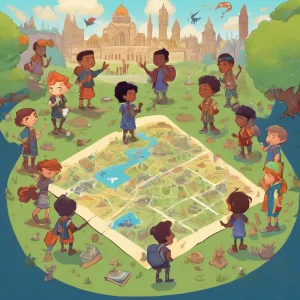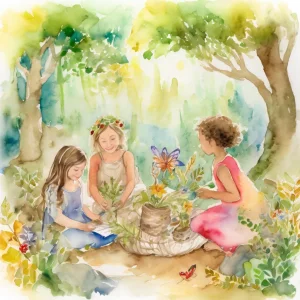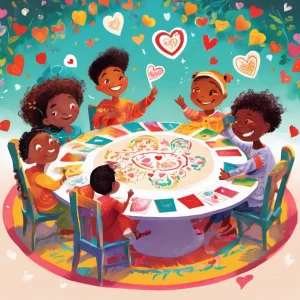Activity
Similar Activities
Cosmic Harmonies: Music from Space Journey
Children’s Age: 10–12 years
Activity Duration: 40 minutes
"Music from Space" is an engaging activity tailored for children aged 10-12, combining fun and education to promote academic growth, empathy, and ecological awareness. Participants…
Activity Duration: 40 minutes
Digital Beats and Hoop Dreams Coding Adventure
Children’s Age: 9–12 years
Activity Duration: 10 – 20 minutes
An engaging coding activity integrating music production, basketball skills, and teamwork for children aged 9-12 years.
Activity Duration: 10 – 20 minutes
Enchanted Discovery: Nature Scavenger Hunt with a Twist
Children’s Age: 7–8 years
Activity Duration: 10 minutes
An outdoor educational activity for children aged 7-8 involving a nature scavenger hunt with historical items, leading to a nature collage creation.
Activity Duration: 10 minutes
The Global Treasure Hunt: Cultural Adventure Quest
Children’s Age: 9–11 years
Activity Duration: 10 – 30 minutes
Get ready for an exciting Global Treasure Hunt adventure! You'll explore different countries, solve clues, and work together in teams. All you need is a map, some clues, and a sens…
Activity Duration: 10 – 30 minutes
Enchanted Forest Tales: Nature Play Theater
Children’s Age: 4–6 years
Activity Duration: 15 – 25 minutes
Engage children aged 48 to 72 months in the "Nature Play Theater" activity, fostering communication skills and ecological awareness. Set up an outdoor performance area with natural…
Activity Duration: 15 – 25 minutes
Eco-Friendly Nature Scavenger Hunt: Discover & Learn
Children’s Age: 11–15 years
Activity Duration: 30 – 40 minutes
Embark on the Eco-Friendly Nature Scavenger Hunt to engage children in nature exploration and ecological learning. This activity promotes communication skills and teamwork while fo…
Activity Duration: 30 – 40 minutes
Exploring Nature's Wonders: Nature Photo Journal
Children’s Age: 12–16 years
Activity Duration: 35 – 45 minutes
The "Nature Photo Journal" activity is tailored for children aged 12 to 16, aiming to boost communication skills and ecological consciousness. Participants will need digital camera…
Activity Duration: 35 – 45 minutes
Eco-Friendly Family Art Exhibition: Creative Conservation Showcase
Children’s Age: 12–16 years
Activity Duration: 35 – 55 minutes
The Eco-Friendly Family Art Exhibition activity encourages children to create eco-friendly artwork using household items, promoting ecological awareness. Materials like non-toxic p…
Activity Duration: 35 – 55 minutes
Eco-Friendly Math Adventure: Crafting Math Tools & Challenges
Children’s Age: 6–7 years
Activity Duration: 30 minutes
Embark on the 'Eco-Friendly Math Adventure' for a blend of learning and eco-awareness! Gather recycled materials like cardboard, markers, and glue. Guide kids to create eco-friendl…
Activity Duration: 30 minutes
Enchanted Harmony: Musical Coding Adventure
Children’s Age: 11–15 years
Activity Duration: 45 minutes
Engage children aged 11-15 in a "Musical Coding Adventure" that blends music, coding, and physical activity. Set up musical instruments, coding cards, and open space for a fun and …
Activity Duration: 45 minutes
Melodies of the Heart: Musical Genre Relay Race
Children’s Age: 7–11 years
Activity Duration: 10 – 20 minutes
An active game where children run a relay race to identify music genre pictures.
Activity Duration: 10 – 20 minutes
Creating Empathy Cards Through Art for Kids
Children’s Age: 3–6 years
Activity Duration: 5 – 20 minutes
In the Empathy Building Art Project, children aged 3 to 6 get to be creative while learning about empathy. You will need paper, crayons, markers, stickers, glue, and scissors. Set …
Activity Duration: 5 – 20 minutes




























